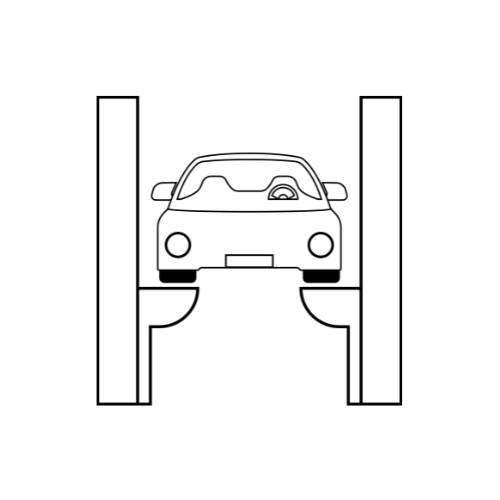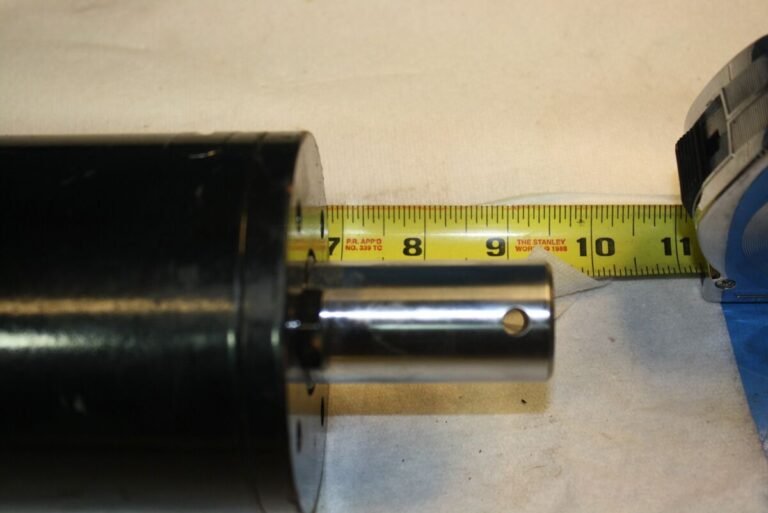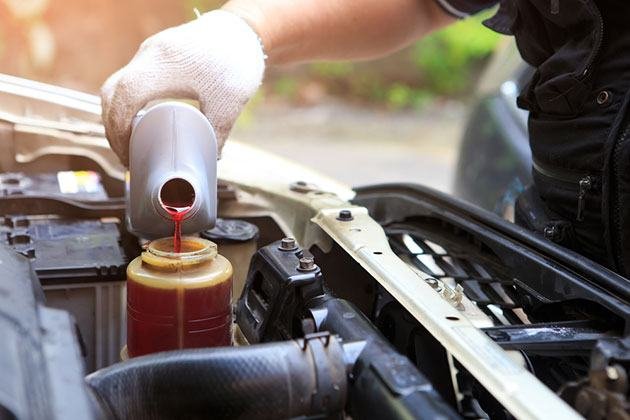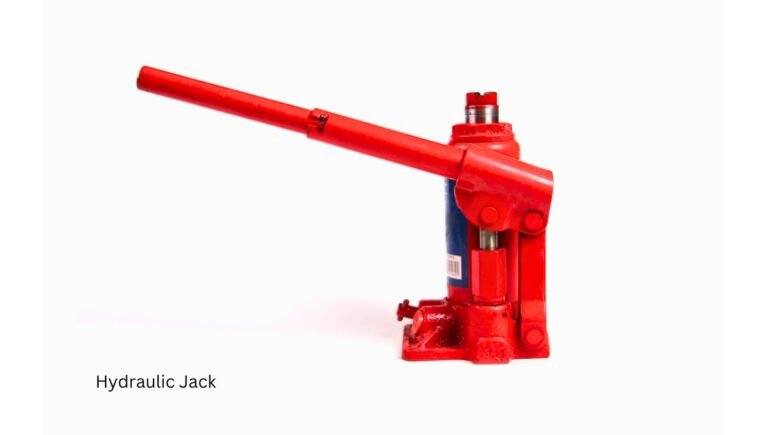How to Remove Hydraulic Oil from Clothes? Quick & Easy!
Hydraulic oil stains on clothes can be stubborn and challenging to remove. Acting quickly is crucial to prevent the oil from setting into the fabric. Using the right techniques and products can make the process easier and more effective. Start by blotting the excess oil with a paper towel to absorb as much as possible.
Pre-treat the stained area with a heavy-duty liquid detergent, ensuring it penetrates the fabric fibers. For best results, let the detergent sit on the stain for a few minutes before washing. Wash the garment in the hottest water safe for the fabric. Repeat the process if necessary until the stain is completely gone.
Introduction To Hydraulic Oil Stains
Hydraulic oil stains on clothes can be stubborn and difficult to remove. These stains are common for those working with machinery or vehicles. Hydraulic oil is thick and greasy, making it cling to fabric fibers. Removing these stains requires specific steps and techniques.

The Challenge Of Removing Hydraulic Oil
Hydraulic oil contains strong chemicals that bind tightly to fabrics. Ordinary washing methods often fail to remove these stains. The oil’s greasy nature makes it even more challenging. Using the wrong methods can set the stain permanently.
Preparation Steps Before Washing
Before washing, prepare your clothes to tackle hydraulic oil stains effectively. Follow these steps:
- Blot the excess oil: Use a paper towel to blot any excess oil gently.
- Apply a degreaser: Use a commercial degreaser or dish soap directly on the stain.
- Let it sit: Allow the degreaser to penetrate the fabric for at least 15 minutes.
- Scrub gently: Use a soft brush to scrub the stain lightly.
These steps help in breaking down the oil molecules, making it easier to wash out. Proper preparation is key to successful stain removal. Follow these steps for better results.
Materials Needed For Oil Removal
Removing hydraulic oil from clothes can be challenging. With the right materials, the task becomes easier. Below are some items you will need for effective oil removal.
Common Household Items
Many common household items can help remove hydraulic oil from clothes. These items are readily available and often found in most homes. Here’s a list:
- Baking soda: Absorbs oil and neutralizes odors.
- Dish soap: Breaks down grease and oil effectively.
- White vinegar: Acts as a natural cleaner and deodorizer.
- Paper towels: Blot excess oil before treating the stain.
Specialized Stain Removers
For tougher stains, specialized stain removers are essential. These products are designed to tackle stubborn oil stains. Here are some options:
- Commercial stain remover: Formulated to target oil and grease stains.
- Enzyme-based cleaner: Breaks down oil molecules for easier removal.
- Degreaser: Specifically designed to remove oil and grease from fabrics.
Using these materials will increase the chances of successfully removing hydraulic oil from your clothes. Always follow the instructions on the product labels for best results.
Pre-treatment Techniques
Removing hydraulic oil from clothes can be challenging. Pre-treatment techniques make the process easier. Follow these simple steps to prepare your clothes before washing. This ensures a more effective stain removal.

Blotting The Stain
First, use a paper towel or cloth to blot the stain. Do not rub, as rubbing spreads the oil. Gently press to absorb as much oil as possible. This step minimizes the oil’s spread.
| Materials | Steps |
|---|---|
| Paper Towel | Gently press on the stain |
| Cloth | Blot without rubbing |
Applying A Pre-treatment Solution
Next, apply a pre-treatment solution to the stained area. You can use dish soap, laundry detergent, or a commercial pre-treatment product. Follow these steps for effective application:
- Pour a small amount of solution on the stain.
- Gently rub the solution into the fabric with your fingers.
- Let it sit for 10-15 minutes.
This allows the solution to break down the oil molecules. It prepares the fabric for washing.
- Dish Soap: Effective for breaking down grease.
- Laundry Detergent: Designed for tough stains.
- Commercial Pre-Treatment: Formulated for oil and grease removal.
After pre-treatment, your clothes are ready for washing. Use the hottest water safe for the fabric.
Washing Procedures
Removing hydraulic oil from clothes can be challenging. The right washing procedures make a big difference. Follow these steps to ensure your clothes come out clean and fresh.
Choosing The Right Detergent
Choosing the correct detergent is crucial. Look for a heavy-duty detergent. It should be strong enough to break down oil. You might also use a specialized stain remover. Check the label to ensure it targets grease and oil stains. Here’s a quick guide:
| Type | Features | Effectiveness |
|---|---|---|
| Heavy-duty Detergent | Strong formula, removes tough stains | High |
| Specialized Stain Remover | Targets grease and oil | Very High |
Setting The Correct Water Temperature
Water temperature plays a big role. Cold water can help prevent the stain from setting. Warm water helps to break down the oil. Follow these steps for the best results:
- Rinse the stained area with cold water first.
- Apply detergent or stain remover directly to the stain.
- Wash the garment in warm water.
- Check the stain before drying. Repeat if necessary.
Always check the care label on your clothes. Some fabrics might require specific temperatures. Following these steps can save your clothes from permanent stains.
Natural Remedies For Stain Removal
To remove hydraulic oil from clothes can be challenging. Natural remedies can offer effective solutions. These methods are eco-friendly and safe. Below are some natural ways to get rid of these stubborn stains.
Using Baking Soda And Vinegar
Baking soda and vinegar can tackle tough stains. First, sprinkle baking soda on the stained area. Let it sit for 15 minutes. This helps to absorb the oil.
Next, pour vinegar over the baking soda. The mixture will fizz, breaking down the oil. After a few minutes, gently scrub the fabric with a brush. Rinse with cold water and check the stain. Repeat if necessary.
For better results, wash the garment in a washing machine. Use a strong detergent. This method helps remove the stain completely.
Leveraging The Power Of Lemon Juice
Lemon juice is a natural bleaching agent. It can help remove oil stains. Squeeze fresh lemon juice onto the stained area. Let it sit for 10-15 minutes. The acid in the lemon will break down the oil.
After the waiting time, scrub the fabric gently. Use a brush for better results. Rinse with cold water to remove the lemon juice. Check if the stain is gone. If not, repeat the process.
For tough stains, mix lemon juice with salt. Apply the mixture to the stain. Let it sit for 30 minutes before scrubbing and rinsing.
Both baking soda with vinegar and lemon juice are effective. They are also safe for most fabrics. These natural remedies can save your clothes from stubborn hydraulic oil stains.
Post-wash Care
After washing your clothes to remove hydraulic oil stains, it is important to check if the stains are fully gone. Proper post-wash care ensures your clothes remain clean and free from residual oil. Follow these steps to ensure your clothes are in the best condition.
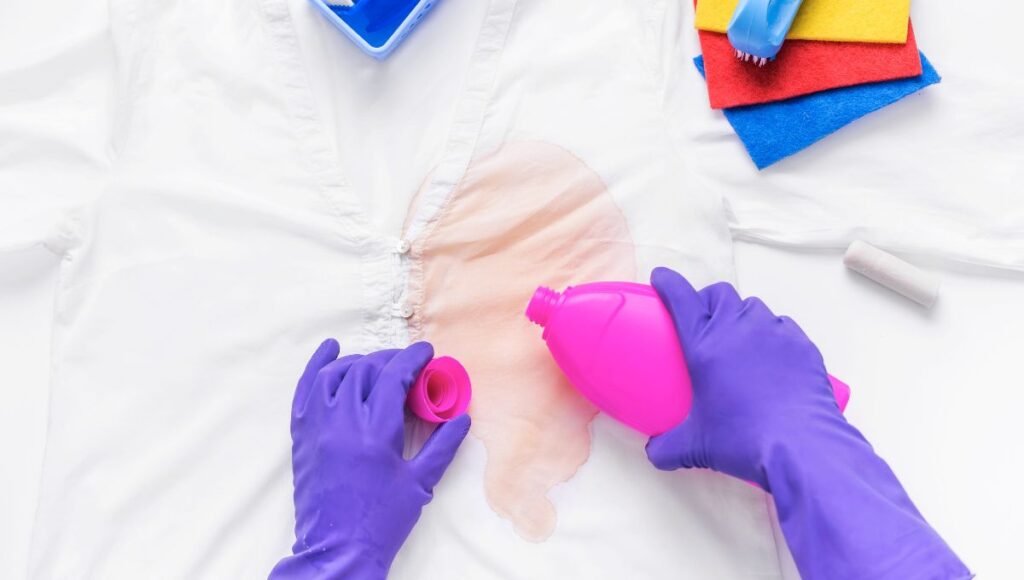
Checking Stain Removal Success
Before drying, inspect your clothes for any remaining oil stains. Look at the previously stained areas under good lighting. If you spot any remaining stains, do not dry the clothes yet.
Use a magnifying glass to check for small oil spots. Remaining stains will be harder to remove once dried.
Re-treat stubborn stains with more detergent or stain remover. Wash the clothes again if needed.
Drying Strategies For Oil-free Clothes
After confirming that stains are removed, choose the best drying method. Air drying is the safest option for delicate fabrics. Hang your clothes outside or in a well-ventilated area.
For machine drying, use a low heat setting. High heat can set any residual oil stains permanently.
Check the care label on your clothes for drying instructions. Some materials may require specific drying methods.
Consider using a drying rack for items that cannot be machine dried. This helps maintain the fabric’s integrity and prevents shrinking.
Once dry, store your clothes properly to avoid new stains. Keep them in a clean, dry place away from any potential oil sources.
Preventive Measures For Future Stains
Preventing hydraulic oil stains on clothes is easier than removing them. By taking a few simple steps, you can keep your clothes clean and protected. This section focuses on preventive measures to avoid future stains.
Protective Clothing Recommendations
Wearing the right clothes in the workshop can save you time and effort. Here are some recommendations:
- Coveralls: Wear coveralls to protect your entire body.
- Aprons: Use aprons for an extra layer of protection.
- Gloves: Always wear gloves to keep your hands clean.
- Sleeve Protectors: Use sleeve protectors to safeguard your arms.
Investing in quality protective clothing ensures long-lasting protection. Choose materials that are resistant to oil and easy to clean.
Best Practices In The Workshop
Maintaining a clean workspace reduces the risk of oil stains. Follow these best practices:
| Practice | Benefit |
|---|---|
| Regular Cleaning | Reduces oil buildup and contamination. |
| Use Mats | Prevents oil from reaching your clothes. |
| Proper Storage | Keeps tools and oils organized and accessible. |
| Immediate Wipe | Removes spills before they spread. |
Implementing these practices helps maintain a safe and clean environment. It also minimizes the risk of stains on your clothes.
Professional Cleaning Options
To remove hydraulic oil from clothes can be challenging. Sometimes, home remedies don’t work. In such cases, professional cleaning services offer effective solutions. They use specialized techniques and products to remove tough stains.

When To Consider A Dry Cleaner
Stubborn stains and delicate fabrics often need professional care. Dry cleaners have the right tools and expertise. They handle materials like silk, wool, and rayon with care. If your clothes are expensive or sentimental, a dry cleaner is a safe choice.
Seek professional help for stains that won’t budge after home treatments. Dry cleaners use solvents that break down hydraulic oil effectively. They also ensure that the fabric’s color and texture remain intact.
Cost Vs. Effectiveness Of Professional Services
Professional cleaning services can be costly. Prices vary based on fabric type and stain severity. Here’s a quick comparison:
| Service | Cost Range | Effectiveness |
|---|---|---|
| Basic Dry Cleaning | $3 – $5 per item | Moderate |
| Stain Removal Treatment | $10 – $20 per item | High |
| Special Fabric Care | $15 – $30 per item | Very High |
Basic dry cleaning works for light stains. Stain removal treatment is for tougher stains. Special fabric care is ideal for delicate materials.
Consider the value of your clothing. Weigh the cost against the effectiveness of the service. Professional cleaning is worth it for high-value or sentimental items.
Troubleshooting Persistent Stains
Dealing with hydraulic oil stains can be frustrating. Sometimes, these stains just won’t budge. Here we discuss troubleshooting persistent stains effectively.
Repeat Cleaning Steps
Stubborn stains need more effort. Repeat the cleaning steps until the stain fades.
Step-by-step guide:
- Pre-treat the stain with a stain remover.
- Let it sit for 10-15 minutes.
- Wash the clothing in hot water.
- Check the stain before drying.
- Repeat if the stain remains.
Hydraulic oil stains can be persistent. Be patient and repeat the process multiple times.
When To Retire Stained Clothing
Sometimes, stains won’t come off. Consider retiring the stained clothing.
Indicators for retiring:
- The stain remains after multiple washes.
- The fabric color has faded.
- The texture of the fabric has changed.
Use the stained clothes for dirty tasks or as rags. Avoid wearing them in public to maintain a neat appearance.
Quick Tips:
- Always check the stain before drying.
- Use a heavy-duty detergent.
- Test cleaning products on a small area first.
How To Remove Hydraulic Oil Stains?
To remove hydraulic oil stains, pre-treat the stain with a heavy-duty detergent. Rub the detergent into the fabric and let it sit for 10 minutes. Wash the garment in the hottest water safe for the fabric. Repeat if necessary.
Can Baking Soda Remove Hydraulic Oil?
Yes, baking soda can help remove hydraulic oil. Sprinkle baking soda on the stain and let it absorb the oil for 15 minutes. Brush off the baking soda and wash the garment with a heavy-duty detergent.
Does Vinegar Work On Hydraulic Oil Stains?
Vinegar can help break down hydraulic oil. Mix equal parts vinegar and water, then apply to the stain. Let it sit for 15 minutes before washing with detergent.
What Detergent Is Best For Hydraulic Oil?
Heavy-duty detergents, like Tide or Persil, are best for hydraulic oil stains. These detergents have enzymes that break down oil and grease effectively. Pre-treat the stain before washing for best results.
Conclusion
Removing hydraulic oil from clothes can be challenging, but it’s possible with the right steps. Pre-treat stains quickly and use effective cleaning products. Always test a small area first to avoid damage. Follow these tips to restore your clothes to their original condition and keep them looking great.
